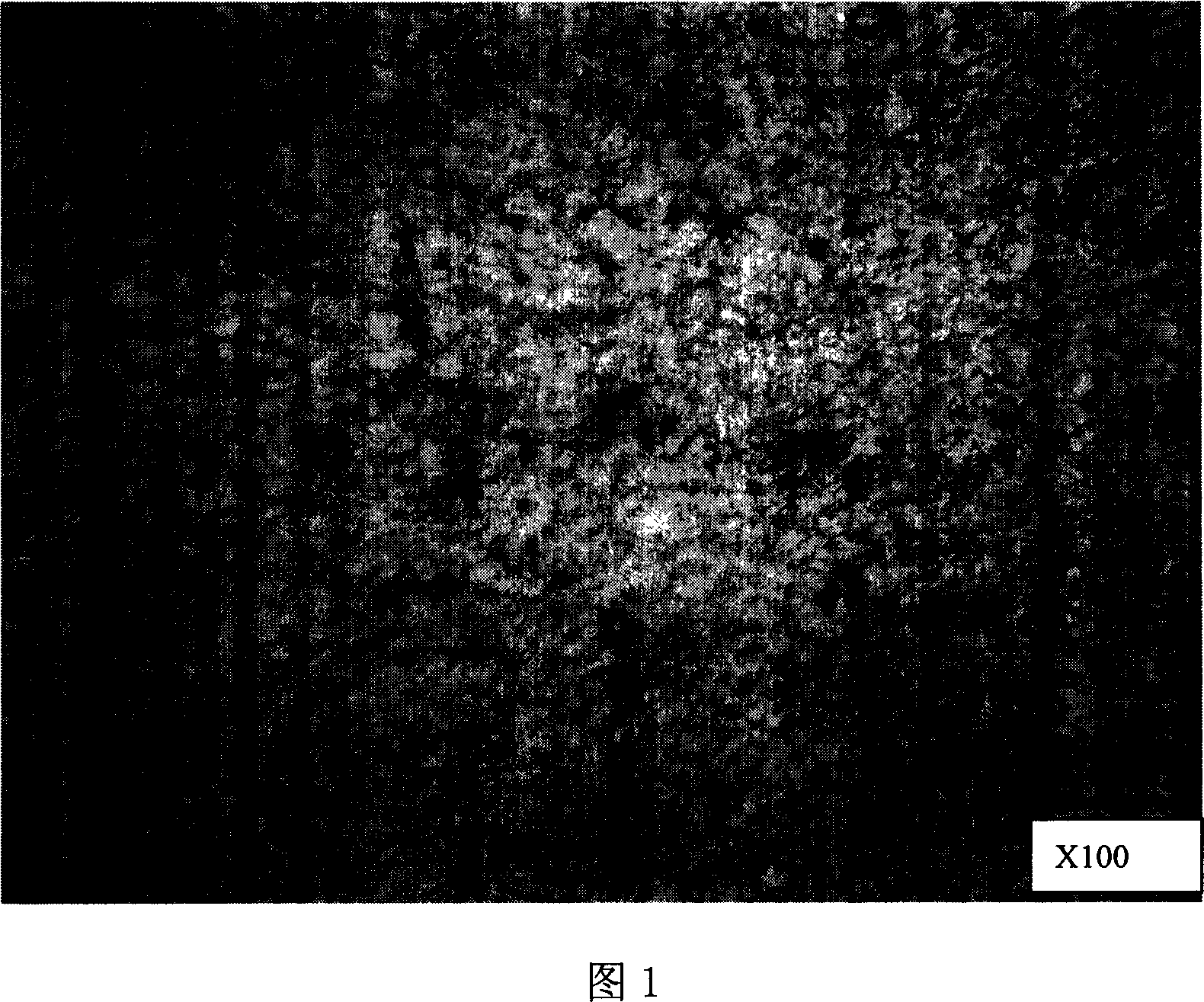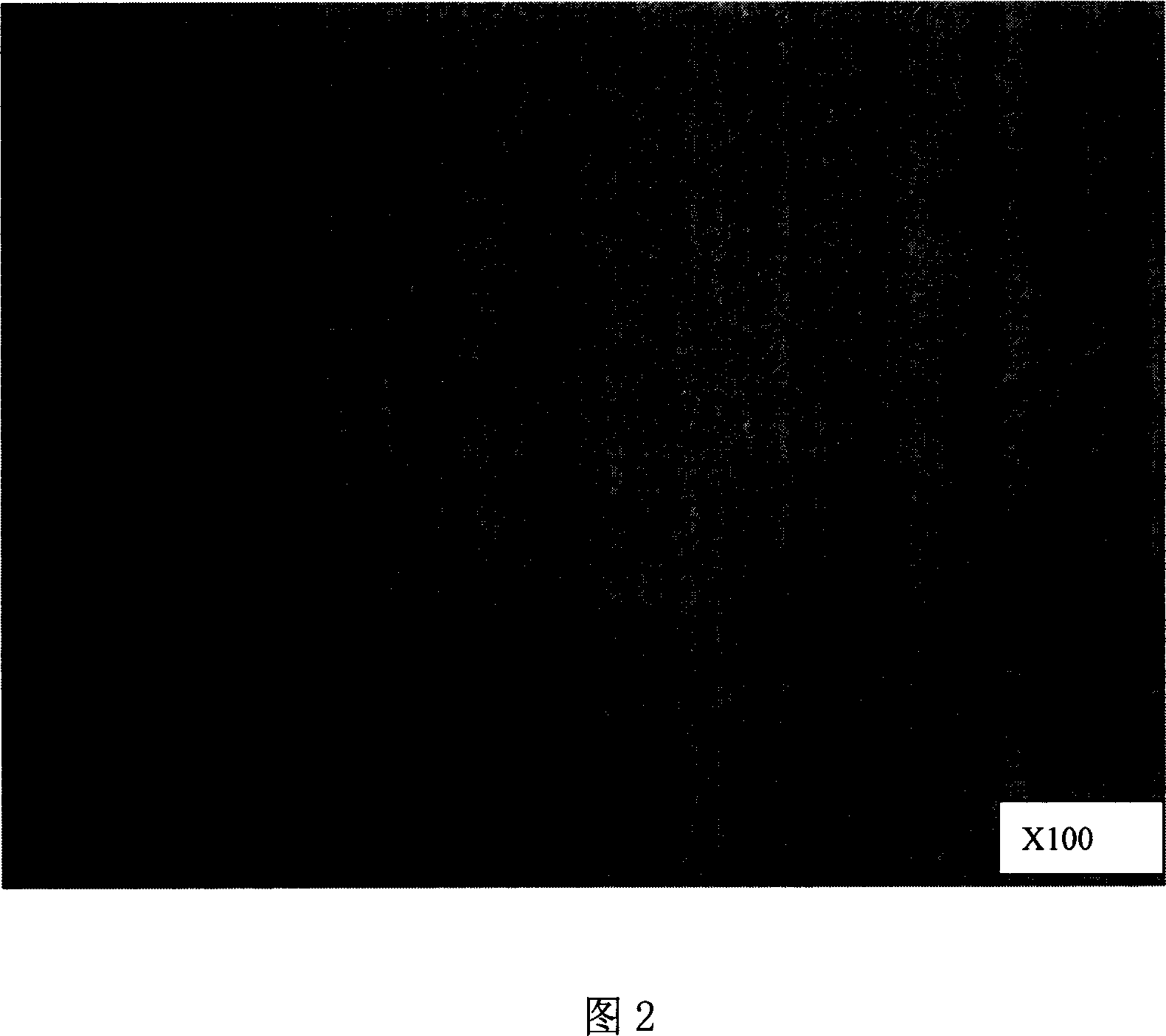Process of making zinc-base alloy wire and rod with high strength and high toughness
A technology of alloy wire and manufacturing method, which is applied in the field of high-strength and high-toughness zinc-based alloy wire or bar manufacturing, can solve the problems of low elongation of materials and affect the wide application of high-strength zinc-based alloys, and achieve improved elongation, Improvement of strength and toughness, effect of high tensile strength
- Summary
- Abstract
- Description
- Claims
- Application Information
AI Technical Summary
Problems solved by technology
Method used
Image
Examples
Embodiment 1
[0017] According to the ZA-27 zinc-based alloy formula (Al: 26.5%, Cu: 2.2%, Mg: 0.05%, Zn: the balance, all are weight percentages), the traditional induction melting is adopted. After 1 hour of heat preservation, it is extruded into a rod with a diameter of 12.5mm; after being drawn once to 11mm, annealed at 400°C for two hours, drawn for the second time to 9.5mm, and annealed at 400°C for two hours, The third time it was drawn to 8.1mm, and finally it was heat treated at 200°C for 1 hour and then water quenched to obtain the required wire. After testing, the tensile strength of the wire rod is 420 MPa, the Vickers hardness is 118, the elongation rate is 22%, and the area shrinkage rate is 62%. As shown in Figure 2, compared with the alloy of the comparative example, the structure of the alloy in the extruded state is obviously refined after drawing and low-temperature heat treatment. The elongation can be significantly improved after thinning.
Embodiment 2
[0019] According to the ZA-27 zinc-based alloy formula (Al: 28.5%, Cu: 2.0%, Mg: 0.03%, Zn: the balance, all are weight percentages), the traditional induction melting is adopted, and after 400 ℃ half After one hour of heat preservation, it is extruded into a rod with a diameter of 12.5 mm. After one drawing to 10.3 mm, the deformation of the cross-sectional area is 50%. After that, it is heat treated at 150°C for 60 minutes and then water quenched. The difference from Example 1 is that Example 2 uses only one drawing process without an annealing process, and the hot extrusion temperature is different. The bar has a tensile strength of 460 MPa, a Vickers hardness of 128, an elongation of 20%, and an area shrinkage of 60%.
Embodiment 3
[0021] According to the ZA-12 zinc-based alloy formula (Al: 10%, Cu: 1.0%, Mg: 0.05%, Zn: the balance, all are weight percentages), the traditional induction melting is adopted. After 1 hour of heat preservation, it is hot-extruded into a rod with a diameter of 8mm. After a deformation rate of 5% of the cross-sectional area each time, it is drawn 6 times into a wire with a diameter of 7mm. After heat treatment at 300°C for half an hour, it is water quenched. The difference from Examples 1 and 2 is that the formula (brand) of the alloy is changed, and the hot extrusion temperature and final heat treatment temperature are also different. The wire has a tensile strength of 408MPa, a Vickers hardness of 105, an elongation of 15%, and an area shrinkage of 58%.
PUM
| Property | Measurement | Unit |
|---|---|---|
| Tensile strength | aaaaa | aaaaa |
| Tensile strength | aaaaa | aaaaa |
| Tensile strength | aaaaa | aaaaa |
Abstract
Description
Claims
Application Information
 Login to View More
Login to View More - R&D
- Intellectual Property
- Life Sciences
- Materials
- Tech Scout
- Unparalleled Data Quality
- Higher Quality Content
- 60% Fewer Hallucinations
Browse by: Latest US Patents, China's latest patents, Technical Efficacy Thesaurus, Application Domain, Technology Topic, Popular Technical Reports.
© 2025 PatSnap. All rights reserved.Legal|Privacy policy|Modern Slavery Act Transparency Statement|Sitemap|About US| Contact US: help@patsnap.com


